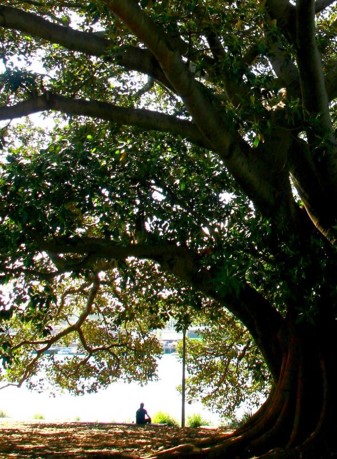Native Plant Conservation Campaign News: Poor city neighborhoods have fewer trees, higher heat stress than wealthy areas.
September 11, 2019
A U.S. Forest Service report found that from 2009 to 2014,
44 states lost tree cover in urban areas. Approximately 28.5 million trees were lost

every year to development, disease, invasive species and severe storms.
Last week, a
National Public Radio analysis found that low-income areas in dozens of major U.S. cities tend to be hotter than wealthier neighborhoods, and they are disproportionately communities of color. Lack of tree cover is a major contributing factor. For example, in Louisville, KY, wealthier areas have
up to twice as many trees as do poorer areas.
The
NPR story contains maps of urban heat islands and the spatial distribution of income in U.S. cities, confirming the prevalence of higher temperatures in poorer neighborhoods.
The story also reports on efforts to address this problem, including the
Green Heart Project. Green Heart plants fully grown trees, as tall as 30 feet, in a test area within Louisville. The five-year study will measure the effects on health indicators, particularly those for heart health, of the plantings. The hope is to use the data to persuade other cities to invest in tree planting.
In addition to improving health, trees also
fight climate change and improve air quality by absorbing carbon dioxide and other air pollutants, among many other benefits. In fact,
the Forest Service study estimated with the loss of trees, cities lost air purification, carbon sequestration, and other ecosystem services valued at $96 million per year, conservatively.
Although the number of programs to promote urban forestry is growing (see e.g. American Forests), few specifically require or even encourage the use of local native species. This is unfortunate. Because they are adapted to local soils and microclimates, natives often require less water and labor, as well as lower chemical inputs, than other species. Further, locally adapted native species promote conservation and restoration of native pollinators, birds and wildlife.
Local natives create urban landscapes that reflect and help conserve the unique beauty and biodiversity of your region!
Ask your local officials to plant native trees and plants along streets, roads and in public spaces!
They are beautiful!
They clean air and water, buffer temperatures and fight climate change!
They support local pollinators, birds and wildlife!
Remind them to prioritize low income communities where tree cover is low!
Photo: A tree, public domain
 every year to development, disease, invasive species and severe storms.
every year to development, disease, invasive species and severe storms. every year to development, disease, invasive species and severe storms.
every year to development, disease, invasive species and severe storms.